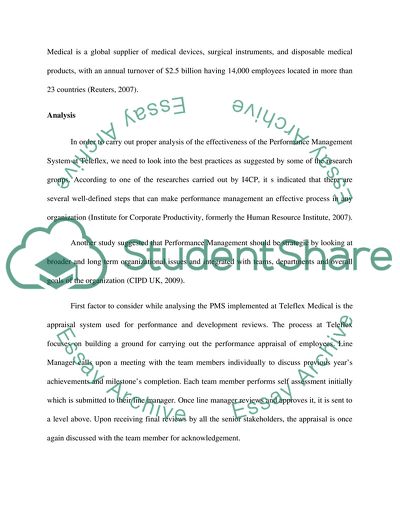Cite this document
(Performance Management System Essay Example | Topics and Well Written Essays - 2500 words, n.d.)
Performance Management System Essay Example | Topics and Well Written Essays - 2500 words. Retrieved from https://studentshare.org/miscellaneous/1732900-evaluate-the-performance-management-system-pms-in-your-company-or-one-with-which-you-are-familiar-and-compare-it-to-theory-and-models-of-good-practice-make-appropriate-recommendations-for-change-to-resolve-any-current-weaknesses-or-problems-in-the-pe
Performance Management System Essay Example | Topics and Well Written Essays - 2500 words. Retrieved from https://studentshare.org/miscellaneous/1732900-evaluate-the-performance-management-system-pms-in-your-company-or-one-with-which-you-are-familiar-and-compare-it-to-theory-and-models-of-good-practice-make-appropriate-recommendations-for-change-to-resolve-any-current-weaknesses-or-problems-in-the-pe
(Performance Management System Essay Example | Topics and Well Written Essays - 2500 Words)
Performance Management System Essay Example | Topics and Well Written Essays - 2500 Words. https://studentshare.org/miscellaneous/1732900-evaluate-the-performance-management-system-pms-in-your-company-or-one-with-which-you-are-familiar-and-compare-it-to-theory-and-models-of-good-practice-make-appropriate-recommendations-for-change-to-resolve-any-current-weaknesses-or-problems-in-the-pe.
Performance Management System Essay Example | Topics and Well Written Essays - 2500 Words. https://studentshare.org/miscellaneous/1732900-evaluate-the-performance-management-system-pms-in-your-company-or-one-with-which-you-are-familiar-and-compare-it-to-theory-and-models-of-good-practice-make-appropriate-recommendations-for-change-to-resolve-any-current-weaknesses-or-problems-in-the-pe.
“Performance Management System Essay Example | Topics and Well Written Essays - 2500 Words”, n.d. https://studentshare.org/miscellaneous/1732900-evaluate-the-performance-management-system-pms-in-your-company-or-one-with-which-you-are-familiar-and-compare-it-to-theory-and-models-of-good-practice-make-appropriate-recommendations-for-change-to-resolve-any-current-weaknesses-or-problems-in-the-pe.


